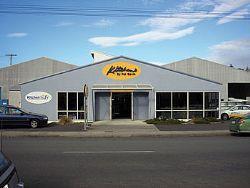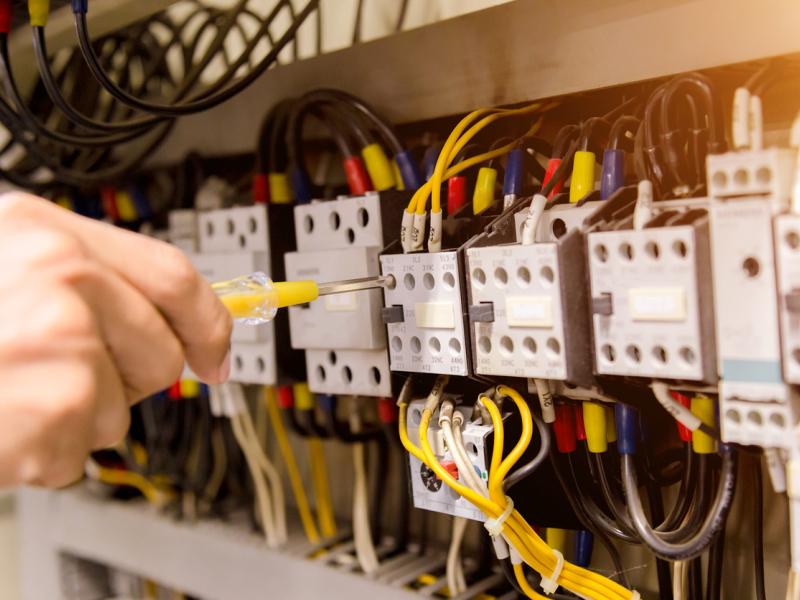IF somebody told you that you could increase your weekly manufacturing output by 15 to 80 percent without spending more on wages or other overheads, you’d be forgiven for being a little sceptical – it is a big ask after all. Well, that somebody is Sean O’Sullivan from Empower Software, who is on a one-man crusade to boost productivity and profits in New Zealand’s manufacturing sector. And he has the results from many manufacturers over five years to prove it has been done many times before. O’Sullivan, who has 15 years manufacturing experience, together with fellow director Dave Garrett, an IT veteran of 20 years, developed Empower time tracking and job scheduling software. O’Sullivan had seen first hand the impact high down time and poor overhead cost calculations was having on the profits of some 150 aluminium window and door manufacturing companies over 10 years. "Aluminium window manufacturing was an extremely tough, competitive industry – it still is – and companies were making little profit and some going to the wall because they were not productive, says O’Sullivan. In comparison, the highly productive and successful window manufacturers had the following common Key Success factors: • PCs on the factory floor and job and staff time tracking software. • Staff were remunerated on production that exceeded budget. Most paid base wage rate plus bonus for additional output. Some paid full contract solely on production that individual staff achieved. • Highly accurate budgeted times on jobs. • Management "back costed" every job to ensure actual costs and times on jobs met budgeted costs and times on jobs. • Low total downtime. Downtimes were tracked on PC and reported weekly against budgeted times. • Investment in good punches and cutting blocks to aid speed of machining. • Good systems and processes in both office and factory. • Good factory layout and production flow. • Good window system which was quick and easy to cut, punch and fabricate. • Job scheduling of current and future work ensured factory staff had plenty of work in front of them. • Costings were complete and accurate to ensure sufficient profit in each job. • Jobs were sold on features, benefits and quality – NOT price. Two key messages O’Sullivan is delivering to manufacturers around New Zealand is: Firstly, while you pay your factory staff for 40 hours per week, they actually only work for around 25 hours per week that can be charged out – "25, not 35 as many people wrongly think". Once you deduct the average nine hours per week that staff are not at work but are paid for anyway (holidays. sick leave, smoko breaks etc) and the six hours per week of factory down time (including the time ‘stolen’ by staff) it only leaves 25 hours per week of "productive work time" that can be worked and charged out. Secondly, many manufacturers factor in a down time ratio of 10 percent into their overhead cost calculations, but O’Sullivan says this is another industry misnomer. "The actual figure is likely to be closer to 20 percent and in a worst case scenario, a lot more." (Templates for calculating your chargeable hours per week and your overhead cost to operate your factory (per man per hour) are available on request free from O’Sullivan). O’Sullivan describes time cards that factory staff manually fill in as mainly a "nonsense", and when manufacturers see actual accurate times reported, using time-tracked hours for labour, they are generally shocked. Reflex Boats, New Zealand’s largest fibreglass boat maker, used time cards that staff filled in for ten years; then they moved to PCs on the factory floor and Empower time tracking. With manual time cards 25 staff were required – now only 18 staff are required. This is a huge gain in productivity and a $250,000 wage cost saving every year. Generally when manufacturers do their overhead costing to operate their factories they come up with $35 to $60 per man per hour – but when you factor in 25 hours per week chargable and 20 percent downtime usually it’s more like $45 to $80 says O’Sullivan. "It can be around $80 per man per hour if the manufacturer’s lease cost is high, the ratio of unproductive staff to productive staff is high, and there’s a high capital cost of machinery to depreciate." He believes factory owners and managers need to check their annual calculations. Empower currently has 69 manufacturers using their time tracking software – including three in Australia. Around 30 of those clients are involved in kitchens, cabinets, shop fitting, furniture, and timber joinery. Phoenix Aluminium Windows and Doors reduced factory staff from 24 to 10.5 (saving $500,000 a year in wages alone) using PCs on the factory floor and their time tracking software – whilst maintaining the same weekly output as before. However, O’Sullivan says manufacturers across a wide range of industry sectors can benefit from their software system. Whangarei-based boat manufacturer Circa Engineering, for example, has boosted output from two boats per man per year to 4.5. Circa purchased the software along with new machinery around two years ago. "In this time we have increased our staff from 14 to 21, that’s 50 percent – but have achieved a 300 percent increase in weekly output. This is a 100 percent across the board increase in output per man," says production manager Deon Ogden. "I’d estimate that 50 percent of this increase can be attributed to Empower Software. This increase in weekly output attributed to Empower is the equivalent reduction of nine factory staff; which is the equivalent cost savings in wages of $315,000 per year." O’Sullivan says they provide a full turnkey operation, including hardware and software installation, implementation and training of both factory staff and production management. He regards time tracking software as a production manager’s tool to significantly boost weekly output – and for general managers it’s a quick and easy way to increase profits and market competitiveness.
How to boost productivity by 15 to 80 percenrt
General
Monday, 11 February 2008






